What To Do If Your Forage Production Is Less Than Halfway There By End Of June
By the end of June, in most years, more than half of the forage needed for the year has already been produced in the Plains states. Make a contingency plan to enact if you’re coming up short.
Ranchers should constantly monitor their available forage — for both grazing and hay production (if they insist on haying), their stocking expectations and rainfall to ensure that their forage production will meet the needs of their grazing livestock. By the end of June, most ranchers will have already produced more than half of the year’s available forage.
Create a contingency plan for years when your ranch’s forage production is coming up short — and if you don’t have one there is no time like the present to make one — says Hugh Aljoe, Noble Research Institute director of ranches, outreach and partnerships.
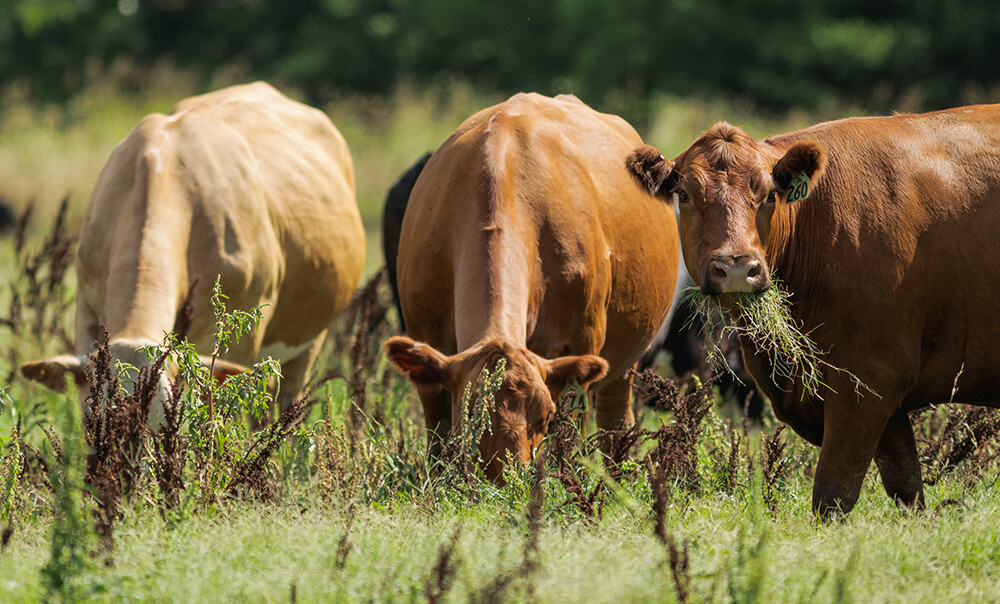
Plan ahead
“If you wait till June 30 to identify that your production is lacking, you’re probably already behind,” Aljoe says. By June 1, Plains states ranchers on average should have already produced 30% of their annual forage, and by June 30, over half — 60%, to be more correct.
“If you don’t have about 60-65% of your needed forage, we probably should start enacting contingency plans that we’ve already identified,” Aljoe says. But what should these mid-summer forage production benchmarks look like, and how can producers measure them?
Aljoe simply says by June 1, ranchers in the plains should have over 100 reserve herd days in front of them and, by the end of June, have enough forage for at least 200 reserve herd days. Reserve herd days are the number of days your existing total number of cattle (herd) can graze on existing forage reserves, including standing pasture and stored forage such as hay – total grazeable forage for the existing herd of cattle – assuming no additional growth and leaving the residual required to sustain the plants and soil organisms.
Looking back can often help producers assess their needs looking forward. According to Aljoe, in an average year, cattle shouldn’t have to be fed hay except during periods of inclement weather, nor should they be asked to “hustle,” grazing plant residues because the leaves have already been grazed. Some can justify planning for a couple of months of hay feeding, but one needs to be sure it is cost-effective to do so. Supplementation is usually required during the winter. So every month that the cows are fed hay or made to hustle beyond planned or optimal grazing means that cattle were overstocked by at least 8.3%. So, ranchers who fed five months of hay in a year where they planned to feed two months were overstocked by about 25%.
This makes stocking rate the most critical decision a rancher makes, and it has lasting effects.
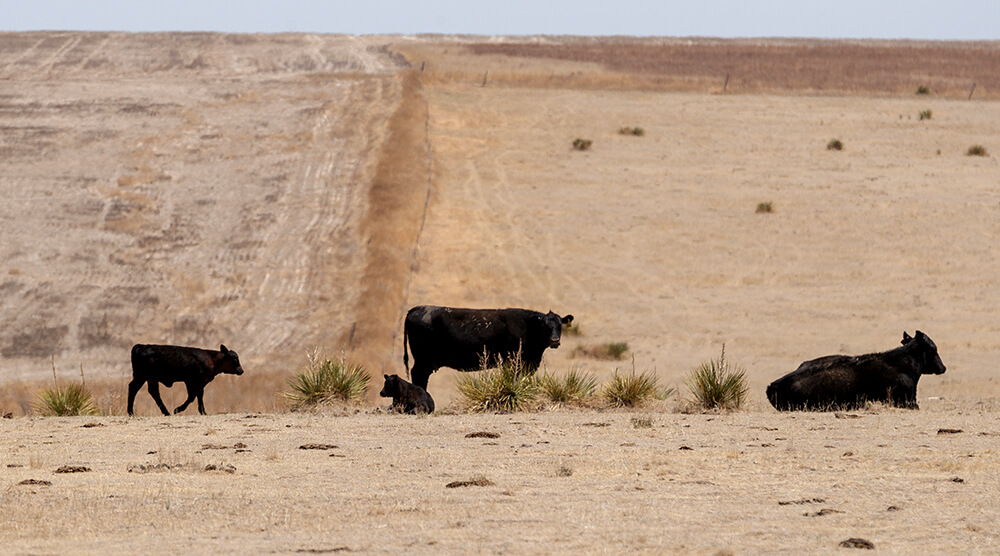
Reduce your stocking rate
One of the most straightforward contingency plans is simply reducing your stocking rate. While many ranchers hesitate to reduce cattle numbers in the middle of breeding season, Aljoe suggests parting with outliers in herd performance.
“If you’ve got animals that are not very productive, those with a bad eye or udders, those that are not sound or are lame, and those that calve late,” Aljoe says, start there. “You can also move off some older cows that don’t have as much life left.”
While many ranchers have already marketed young stock, parting with backgrounding cattle or younger cattle can also help reduce the stocking rate during dire times. And calves still on the cow can be weaned earlier than usual to reduce nutritional demand on the dams.
As the breeding season wraps up, run a pregnancy check after 30 days to cull the open cattle. Still, as Aljoe says, the forage contingency plan is even more critical if a rancher hesitates to adjust the stocking rate during a summer breeding season.
As a rule of thumb, Aljoe recommends ranchers carry only 80% of their total stocking capacity. This means that they should only be overstocked once every five to seven years, not to mention that extra forage reserves in good years can add some marketing options for cattlemen.
“We tend to be a little optimistic, but alas, most of the time, we’d be much better off most of the time, if we were stocked at what I call 80% of carrying capacity,” he says. “That extra forage gives you the opportunity to carry your calf crop on after weaning, which is a better market most of the time.”
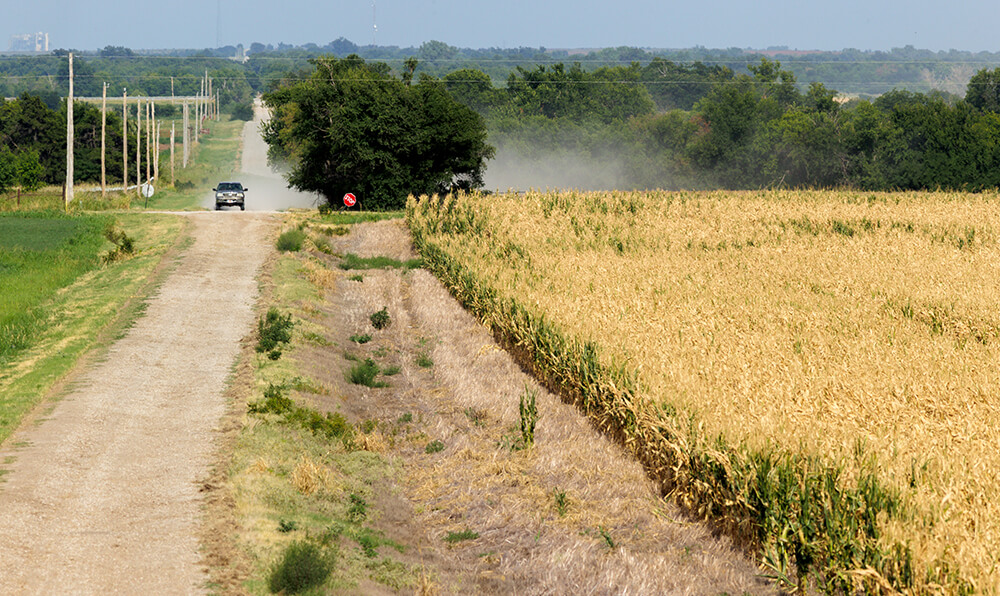
Filling the gaps
If reducing the stocking rate isn’t ideal, and forage is found lacking by the end of June, Aljoe says ranchers can fill in the gaps. It can be costly, but some forage crop pasture, such as sudangrass, sorghum, pearl millet or other grazing cover, can provide a short-term solution if we can time planting ahead of a good rain. By the end of June, we often find ourselves in a summer slump with few rainfall chances. Ideally, we would have anticipated this situation earlier and planted in early June. A late summer planting can provide early fall grazing, but rain is still the key factor to making this work.
Ranchers using grazeable cover crops should be mindful of using that forage efficiently. One simple way to manage forage use is to control or limit the grazing time. Allow the cattle into a portion of the field that will meet their grazing needs for the day, and move them daily. By intensively managing grazing in this way, ranchers reduce the amount of forage that gets walked down by livestock, increase the amount of regrowth and increase the number of days they can graze that land.
“If you’re going to spend the money on it (cropland pasture), you want to make sure you utilize it effectively and efficiently,” Aljoe says.
Stockpiling as much forage as possible helps stretch the available grazing. Keep cattle off stockpiled grass until after the first frost. In Aljoe’s experience, bermudagrass is great for stockpiling, because ranchers can easily graze it through late summer, pull livestock off to let it regrow in early fall, and start using it after the first freeze, which will ensure it keeps its forage quality through early winter.
When stretching a slim supply of forages, Aljoe stresses efficiency and management. If ranchers are afraid their forages might be lacking, they can make some quick and simple moves to bolster their forage supply in early summer, such as applying a limited amount of starter fertilizer if nutrient levels are low and perhaps herbicide to pastures with an abundance of weeds relative to grass – which is admittedly a short-term fix. Most important is being more strategic in their management – an approach that can have long-term positive effects and be as easy as grazing pastures earlier in the growing season that have livestock water issues in the summer.
“We’ve seen and observed on our own ranches and working with other producers that when you start managing your grazing to where you are providing daily or every-other-day grazing allocations to the livestock, the efficiencies that are accrued allow us to have grass for a lot longer,” Aljoe says.
Comment
Leave a Reply
1 comment on: "What To Do If Your Forage Production Is Less Than Halfway There By End Of June""

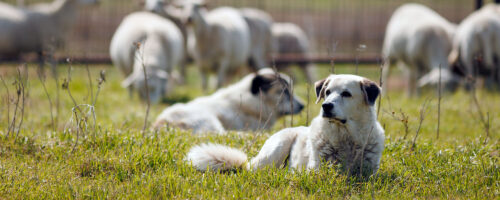
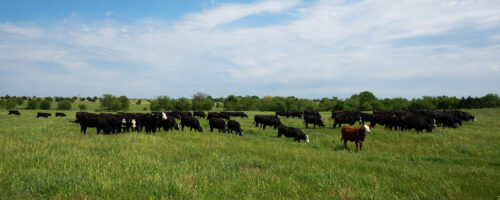
Greg Carver
June 20, 2023Good article. Helpful and practical information.